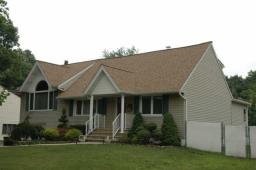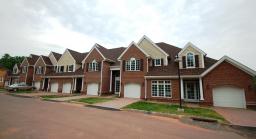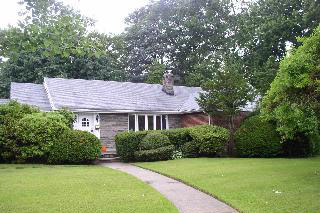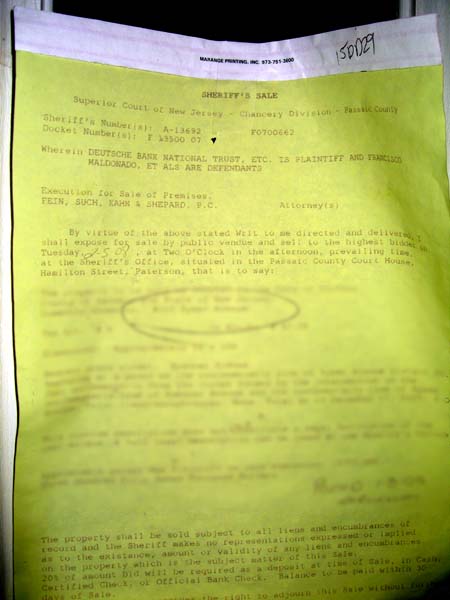Another mortgage-refinancing boom is under way. But this time around, many homeowners will be watching from the sidelines.
For the first time since 2005, mortgage rates have slipped well below 6%, ending last week at about 5.87%, according to mortgage tracker HSH Associates. Some lenders are offering even lower deals. At these levels, about 37% of homeowners could refinance their mortgages and save money on their monthly payment, estimates investment bank Bear Stearns Cos. As rates drop further — and some expect that to happen if the economy continues to weaken — increasing numbers of consumers will find refinancing their existing mortgage worthwhile.
But here’s the catch, and it’s a big one: Many homeowners won’t benefit, either because their mortgage is too big or their credit score is too low. In other cases, falling home prices will make it tough for them to refinance.
As the subprime-lending crisis continues to roil the housing and financial markets, rates for so-called jumbo mortgages — those above $417,000 — are now uncharacteristically priced so far above conventional mortgages that refinancing generally makes no sense for homeowners who hold them. At the same time, conventional borrowers who have lower credit scores — or relatively little equity in their houses — are finding that they generally don’t qualify for the best rates, often negating any expected benefits to the pocketbook.
The result: The big winners will be conventional borrowers with so-called conforming loans — those eligible for purchase by Fannie Mae and Freddie Mac, the two government-sponsored entities that rule the mortgage market. In particular, borrowers with high credit scores or a large amount of equity already in their home, or some combination of both, stand to benefit, says Dale Westhoff, who heads Bear Stearns’s mortgage research. In the past, when rates have dived below 6%, “you’d normally see subprime and Alt-A and jumbo borrowers” in the market, Mr. Westhoff says. “But they’re really not going to be participants in this refi wave.”
…
Ron Hermance is more blunt. The chairman and CEO of New Jersey’s Hudson City Bancorp Inc. says many consumers “will be left out in the cold this time because underwriting is back in vogue,” and many homeowners will find that during the previous housing boom “they originally got credit they weren’t entitled to.” In the first two weeks of this year, refinancings accounted for 56% of Hudson City’s mortgage volume, compared with 42% for all of last year.
…
For jumbo borrowers, though, higher standards aren’t the biggest problem: Rates on those loans averaged 6.8% at the end of last week, according to HSH, meaning the spread between conventional and jumbo rates is nearly a full percentage point — four times the typical gap.
Jumbo rates, lenders say, aren’t coming down alongside conventional rates because buyers of those mortgages in the secondary market remain skittish. As such, today’s jumbo rates are well above the existing rates many homeowners currently have on their mortgage, meaning “there’s no reason to refinance,” says Jay Steren, CEO at Mortgage Capital Associates, a Los Angeles mortgage banker.
In the conventional-mortgage market, Fannie Mae and Freddie Mac are moving to risk-based pricing, which has the effect of tightening lending standards across the country. The upshot: Homeowners with weak credit scores or little equity in their home will pay for the risk associated with underwriting their mortgage through higher interest rates and added fees — which has the effect of dimming, if not eliminating, the benefits of refinancing.
…
To get the best rates under the new risk-based guidelines, homeowners “need a credit score over 679, or equity of greater than 30%,” says Sanborn Mortgages’ Mr. Menatian. But as home prices fall in many markets, homeowners’ equity sinks alongside it — making it tough to get more-attractive rates.
The risk-based guidelines impose so-called delivery fees that range between 0.75% and 2% of the mortgage value for consumers with credit scores below 680. The highest fees are charged to those with credit scores below 620.
Mr. Menatian says buyers with credit scores in the 620 to 639 range, and who have less than 30% equity, are getting mortgage rates these days of about 6.375%, while the best borrowers are getting 5.75%.




